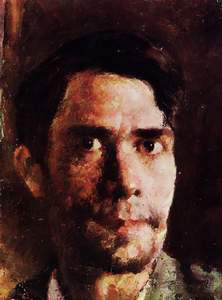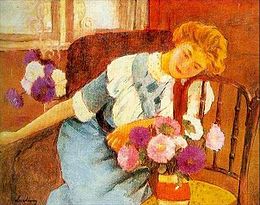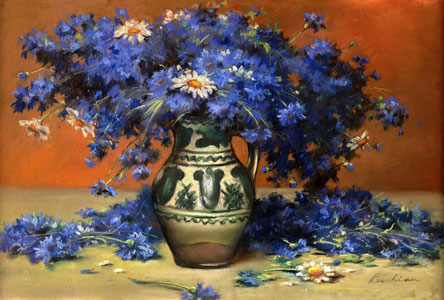Stefan Luchian
(1868-1916) Impressionist Artist
 Stefan Luchian
Stefan Luchian
Stefan Luchian was born in Stefanesti, a village of Botosani County, as the son of Major Dumitru Luchian and of Elena Chiriacescu. The Luchian family moved to Bucharest in 1873 and his mother wanted to follow his father's path and join the Military School, but instead chose to join in 1885 the painting class at the Fine Arts School, where he was encouraged to pursue a career in painting by Nicolae Grigorescu, whose work was to have a major impact on his entire creation.
Starting autumn 1889 Luchian studied for two semesters at the Munich Fine Arts Academy, where he created copies of the works by Correggio and Rembrandt housed in the Kunstareal. After his return to Romania, he took part in the first exhibition of the Cercul Artistic art group.
He showed himself unable to accept the academic guidelines imposed by the Bavarian and Romanian schools. The following year, he left for Paris, where he studied at the Académie Julian, and, although taught by the academic artist William-Adolphe Bouguereau, became acquainted with impressionist works of art.Luchian's painting Ultima cursa de toamna shows the influence of Édouard Manet and Edgar Degas, but also echoes of the Société des Artistes Indépendants, Modernism, and Post-impressionism (also obvious in works created after his return to Bucharest).
 Interior (Lorica), Luchian's last painting (1913
)
Interior (Lorica), Luchian's last painting (1913
)
In 1896, together with Nicolae Vermont, Constantin Artachino, and the art collector Alexandru Bogdan-Pitesti, he was one of the main founders of Bucharest's Salonul Independentitor, which was opened in front of the official Salon (the Romanian equivalent of the Paris Salon). Two years later, the group led to the creation of Societatea Ileana and its press organ, Ileana, which Luchian was the first to illustrate. After that moment, Luchian began integrating Symbolist elements in his work, taking inspiration from various related trends (Art Nouveau, Jugendstil and Mir iskusstva).
In 1900, Luchian contributed two pastels to Romania's Pavilion at the World Fair, and in the same year suffered the first symptoms of multiple sclerosis, the disease which, after some initial improvements, was to haunt him for the rest of his life. Nonetheless, he continued painting and, until 1915, had his works displayed in numerous exhibitions, albeit to a largely indifferent public.[9] At his 1905 exhibition, the only buyer of a painting was his former teacher Grigorescu. Despite being appreciated by a select few (including the writer Ion Luca Caragiale), Luchian lived in poverty (the large fortune he had inherited was progressively drained).
 Paralysed from 1909, he had to live the rest of his life in an armchair. This did not prevent him from working on an entire series of landscapes and flowers. He had begun flower paintings earlier, but from 1908 he concentrated all his creative energy into the subject. Toward the end of his life, Luchian was no longer able to hold the painter's brush with his fingers, and was instead helped to tie it to his wrist in order to continue work.
At the time, he had begun enjoying considerable success — a phenomenon which the writer Tudor Arghezi attributed to the momentary rise of Take Ionescu as a politician (Ionescu had become the center of a fashion and subject of imitation, and he was among the first two buy more than one of Luchian's paintings). As his disease became notorious, a rumor spread that Luchian allowed someone else to paint in his name; the scandal caused brought Luchian's arrest under charges fraud (he was released soon after). Arghezi took pride in being one of his few defenders.
One of the last events in Luchian's life was a visit paid to his house by composer and violinist George Enescu; although the two had not met before, Enescu played his instrument as a personal tribute to the dying artist.
He died in Bucharest and he was buried at the Bellu Cemetery.
Wikipedia contributors, 'Stefan Luchian', Wikipedia, The Free Encyclopedia, 31 December 2008, 01:42 UTC, <http://en.wikipedia.org/w/index.php?title=%C5%9Etefan_Luchian&oldid=261002104>
 Vase of Cornflowers in pastels by Stefan Luchian
Vase of Cornflowers in pastels by Stefan Luchian |
|




